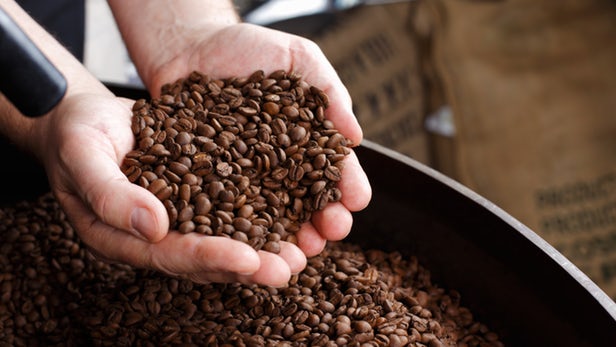
If you’ve seen even one advertisement for premium coffee, then you’ve probably heard someone going on about “100 percent pure Arabica beans” … but does the coffee really only contain Arabicas? A new method makes it quicker, cheaper and easier to find out.
Arabica beans are generally considered to be better tasting than cheaper Robusta beans, which trade at as little as half the price. Combined with the fact that Robustas are higher-yielding and easier to grow, this makes it tempting for some companies to surreptitiously cut their Arabica-based coffee with a bit of Robusta.
Traditionally, the only way of checking the purity of Arabica coffee involves testing samples for the presence of a chemical known as 16-O-methylcafestol (16-OMC) – it has long been thought that the compound is present in Robusta beans, but not in Arabica. Unfortunately, samples need to be sent off to a lab for analysis, and processing of those samples takes approximately three days.
Now, however, researchers from Britain’s Quadram Institute have discovered that a Pulsar benchtop NMR (nuclear magnetic resonance) spectrometer made by Oxford Instruments can do the same thing on-site in just 30 minutes. The device uses radio waves and magnetic fields to obtain information about the molecular composition of a sample, and can reportedly be easily operated by non-specialists. It’s previously been utilized to detect horse meat in ground beef.
In lab tests, it was used to analyze 60 samples of supposedly 100-percent Arabica coffees gathered from 11 different coffee-growing countries and regions around the world. While 90 percent of those samples were deemed to be pure, the rest had high enough 16-OMC levels to indicate fraud.
The spectrometer can detect Robusta concentrations as low as 1 percent in blended coffees. In fact, it turned out to be sensitive enough to reveal that even Arabica beans do contain small amounts of 16-OMC. Therefore, the testing procedure had to be adapted to allow for a threshold amount of the chemical, which will be detected regardless of whether or not Robusta is present.
A paper on the research was recently published in the journal Food Chemistry.
Sources: Quadram Institute, Oxford Instruments
source: http://www.newatlas.com / NewAtlas.com / Home> Science / by Ben Coxworth / May 17th, 2018


